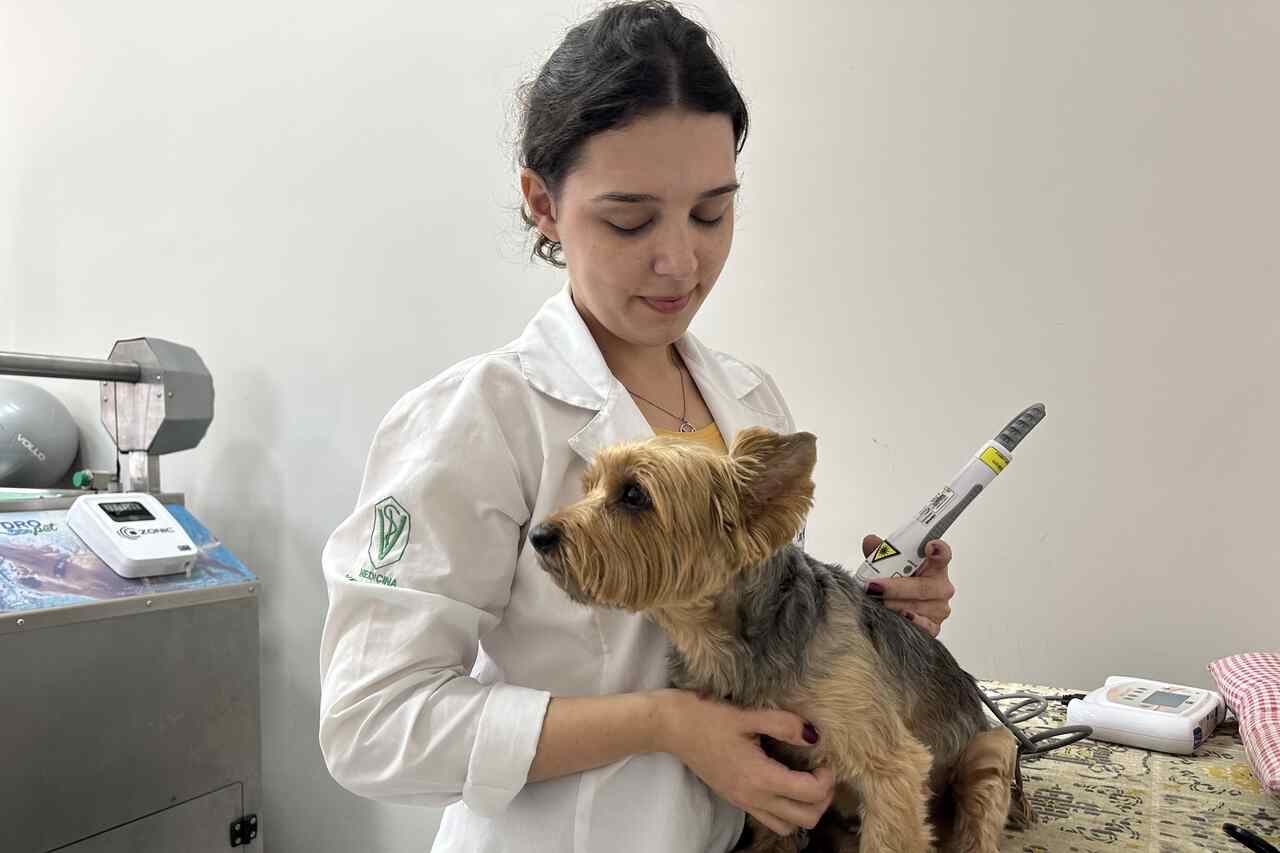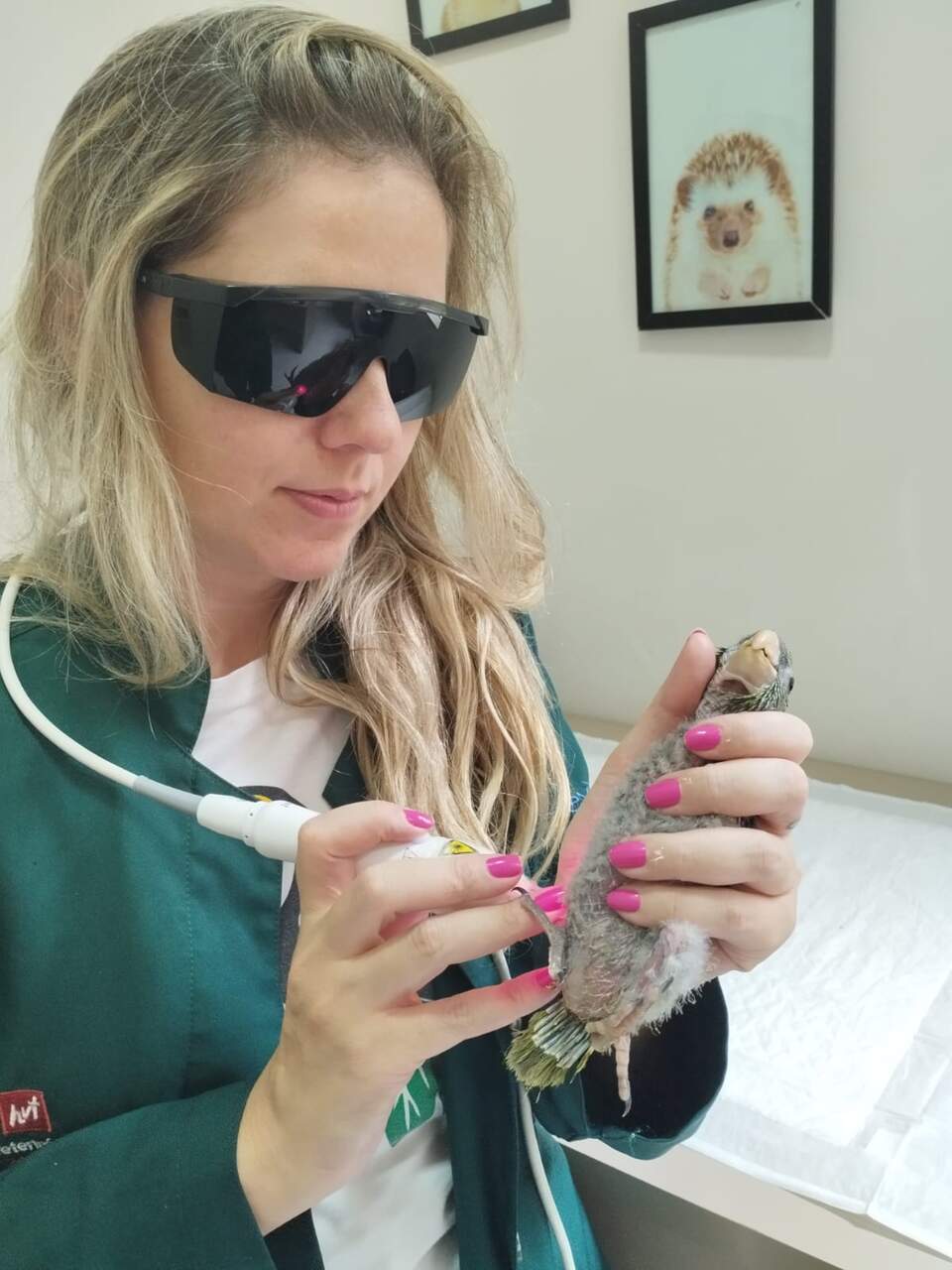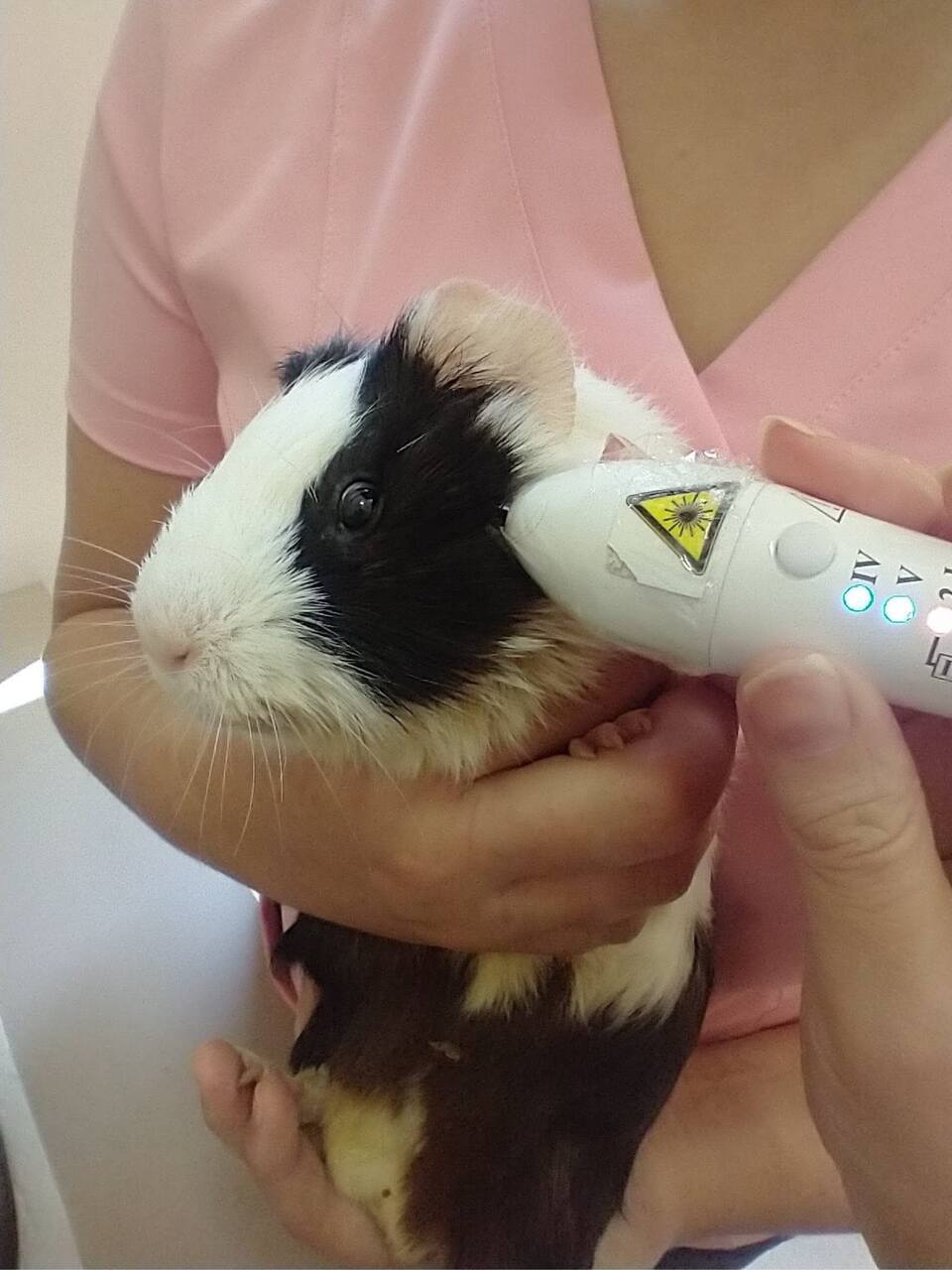 See how laser therapy accelerates pets’ recovery from various diseases (Photo: Julia de Camargo)
See how laser therapy accelerates pets’ recovery from various diseases (Photo: Julia de Camargo)
Laser therapy in veterinary medicine is revolutionizing the way pets are treated with a safe, non-invasive, and effective approach.
+ The myths and truths about wet food for dog nutrition
The technique, also known as photobiostimulation, stimulates recovery and alleviates various conditions in animals by modulating cellular functions, being effective from musculoskeletal injuries to neurological problems.
Comparatively, laser therapy offers significant advantages over conventional treatments. In cases of wounds, for example, the combination of laser therapy with traditional management involving medication, dressings, etc., accelerates healing and reduces secretion formation.
Morgana Prado, specialized in wild and exotic animals at Taquaral Veterinary Hospital, in Campinas-SP, states that the procedure acts on combating free radicals, thus producing antioxidant effects and anti-inflammatory action, resulting in prevention and treatment of various diseases.
 Morgana Prado, specialized in wild and exotic animals at Taquaral Veterinary Hospital
Morgana Prado, specialized in wild and exotic animals at Taquaral Veterinary Hospital
Laura Morales Oliveira, a veterinarian specialized in Physiotherapy and Animal Rehabilitation at Taquaral Veterinary Hospital, emphasizes that light acts directly on cells, promoting reduction of pain and inflammation, similar to the effect of anti-inflammatories.
“With the advantage of being a localized treatment and without side effects,” she emphasizes. She also mentions that the dosage and power of laser therapy vary between species and individuals, being adapted according to skin thickness and color, as well as the presence of fur or feathers.
Anna Beatriz Pereira Barros, also a physiotherapist at Taquaral Veterinary Hospital, confirms that laser therapy has shown remarkable results in pets, especially in cases of herniated discs and post-surgical recovery.
She draws attention to the latest innovation, Transcranial Photobiomodulation, which is used to treat brain conditions in elderly pets and other neurological cases.
Personalization
The application of laser therapy must comply with certain criteria that vary according to the patient. In cats, for example, as they are more skittish, veterinarians minimize restraint and resort to distractions, such as treats, to make the treatment as comfortable as possible.
There are contraindications and include oncology patients, pregnant animals, puppies, and areas with active bleeding. Fabiana Vitale, specialized in dermatology at Taquaral Veterinary Hospital, emphasizes that it is essential for the veterinarian and the owner to follow safety regulations, such as wearing protective goggles, to minimize risks during application.
According to Fabiana, there has been a significant increase in laser therapy applications in veterinary dermatology, especially in the treatment of wounds and skin infections. She emphasizes that low-power laser therapy is effective against feline sporotrichosis, reducing costs and treatment time.
Non-conventional pets also benefit greatly from laser therapy. Morgana Prado highlights the advantage of this modality because the treatment is minimally stressful.
 Dosage and power of light vary between species and individuals, being adapted according to skin thickness and color, as well as the presence of fur or feathers
Dosage and power of light vary between species and individuals, being adapted according to skin thickness and color, as well as the presence of fur or feathers
She highlights the application of the ILIB method (Intravascular Blood Irradiation with Laser) that focuses on the radial artery, improving blood circulation and strengthening the immune system, treating everything from arthritis to gastrointestinal problems in animals.
“The acceptance by owners is high, given the safety and minimal invasiveness of the treatment. The cost of therapy is affordable and usually included in physiotherapy or rehabilitation sessions. But it is worth noting that multiple applications are usually necessary,” adds Dr. Anna Beatriz.

